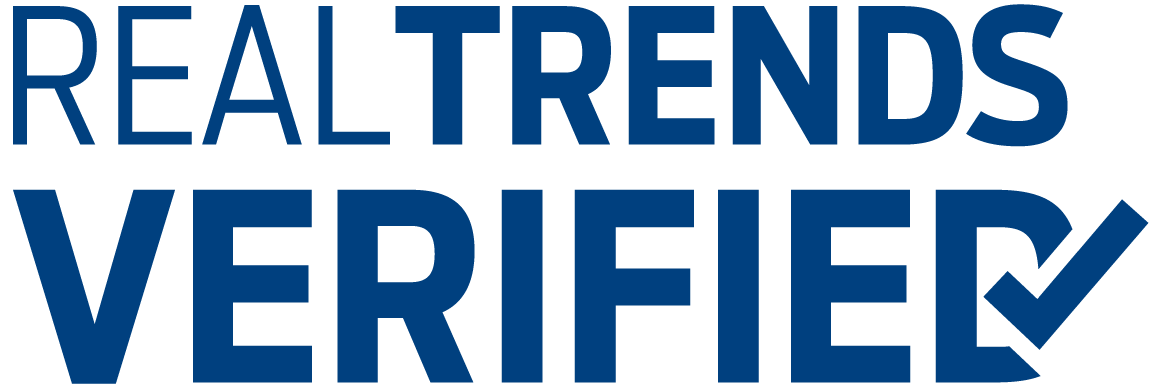Open houses can be a goldmine for potential leads and a great way to showcase your listings. But let’s face it – getting visitors to sign in can sometimes feel like pulling teeth. People are increasingly hesitant to hand over their personal details.
Sign-in sheets are crucial for your business and for everyone’s safety. In fact, a recent survey by the National Association of REALTORS® (NAR) showed that 22% of real estate agents experienced situations where safety was a concern. Knowing who is coming and going at an open house can help address these concerns.
So, how can you create a sign-in process that visitors will use while still gathering the information you need?
That’s exactly what we’re going to tackle in this article. Plus, we’ll provide you with a free, customizable sign-in sheet template and proven strategies to encourage its use.

A Free Open House Sign-In Sheet Template
Here are two examples of a sign-in sheet for an open house. You can edit the fields and insert your brokerage logo or information at the top to personalize it.
[Insert Brokerage Logo or Information Here]
OPEN HOUSE SIGN-IN SHEET
Welcome to our open house! Please take a moment to complete this short registration form.
Your information will be kept confidential and will only be used for follow-up purposes related to this property.
Name: ____________________________________________
(First and Last)
Email Address: ____________________________________________
Phone Number: ____________________________________________
How interested are you in buying a home in this area? (Circle one)
1 (Low) – 2 – 3 – 4 – 5 (High)
Are you interested in a free home valuation?
[ ] Yes [ ] No
Are you currently working with a real estate agent?
[ ] Yes [ ] No
Download Your Free Open House Sign-In Sheet Template
We’ve made it easy for you to access, download, and customize two different templates for your own use. Claim your forms just below.
The Challenge with Sign-In Sheets (and How to Encourage Sign-Ins)
While sign-in sheets are crucial for open houses, getting visitors to fill them out can be a real challenge. Let’s explore some common obstacles you might face and strategies to overcome them.
Challenge #1: Visitors are concerned about privacy.
Solution: Be transparent about what you do with their information.
- Clearly state how you’ll use their information (e.g., “We’ll only contact you about this property or similar listings.”).
- Offer an opt-out option for future communications.
- Consider using a QR code that links to your privacy policy for visitors who want more details.
Challenge #2: People are in a hurry and don’t want to take the time.
Solution: Keep it short.
- Keep your form short, sweet, and to the point, asking only for essential information.
- Consider using digital sign-in options on a tablet for quicker entry.
- Have multiple sign-in stations to avoid bottlenecks.
Challenge #3: Visitors don’t see the value in signing in.
Solution: Offer incentives.
- Host a raffle for those who sign in (e.g., a gift card to a local restaurant).
- Provide exclusive market reports or homebuying guides to those who provide their email.
- Offer a future free home valuation service for those who sign in.
Challenge #4: The sign-in sheet is overlooked or forgotten.
Solution: Make it impossible to miss.
- Place the sign-in sheet or tablet at the entrance where visitors can’t miss it.
- Have a greeter who warmly welcomes visitors and directs them to sign in.
- Have the sign-in sheet on a clipboard to hand it directly to the visitor.
Challenge #5: Visitors claim they’re “just looking.”
Solution: Emphasize the benefits beyond buying.
- Explain that signing in helps you keep track of how many people viewed the home for the seller.
- Mention how you can keep them updated on market trends even if they’re not ready to buy.
- Highlight that signing in is a security measure for everyone’s safety.
Challenge #6: People are already working with another agent.
Solution: Focus on the current property.
- Assure them that signing in doesn’t commit them to working with you.
- Explain that you need to track visitors for the homeowner’s records.
- Offer to send them information about just this property, respecting their relationship with their agent.
Challenge #7: Visitors feel pressured or uncomfortable.
Solution: Create a welcoming, no-pressure environment.
- Train yourself and any team members to be friendly but not pushy.
- Consider offering refreshments near the sign-in area to create a more relaxed atmosphere.
- Use warm, inviting language on your signage and when speaking to visitors.
Overcoming Objections: Scenarios and Scripts
Preparing for common objections can help you handle them smoothly during your open house. Here are 6 scenarios with scripts to help you overcome objections to signing in.
1. The Privacy Concerned Visitor
Visitor: “I don’t feel comfortable giving out my personal information.”
Agent: “I completely understand your privacy concerns. We take data protection very seriously. The sign-in sheet is primarily for security purposes, as recommended by [the National Association of Realtors]. Your information won’t be shared or used for marketing without your consent. Would it be okay if you just left your name and email? That way, we can send you information about this property if you’re interested.”
2. The “Just Looking” Visitor
Visitor: “Oh, I’m just looking. I don’t need to sign in.”
Agent: “I appreciate your interest in the property! Even if you’re just browsing, signing in helps us keep track of how many people viewed the home. This information is valuable for the homeowner. Plus, if you sign in, I can share updates on any price changes or similar properties that might interest you. It only takes a moment, and there’s no obligation.”
3. The Hurried Visitor
Visitor: “Sorry, I’m in a rush and don’t have time to fill out forms.”
Agent: “I understand you’re pressed for time. Our sign-in process is super quick; it’ll only take 30 seconds, I promise! If you’d prefer, I can even jot down your details for you while you start looking around. This way, you won’t miss out on any potential follow-up information about the property. What’s the best email to reach you?”
4. The “Already Have an Agent” Visitor
Visitor: “I already have an agent, so I don’t want to sign in.”
Agent: “That’s great that you’re working with an agent! The sign-in sheet is actually for everyone’s security and to maintain a record for the homeowner. It doesn’t commit you to working with me at all. I respect your relationship with your agent. Would you mind just putting down your name? If you like, I can even note that you’re already represented.”
5. The Suspicious Visitor
Visitor: “Why do you need all this information? Are you just going to spam me?”
Agent: “I assure you, that’s not our intention at all. We collect this information for three primary reasons: security, providing feedback to the homeowner on the open house, and ensuring we can follow up with any important information about this specific property. We have a strict no-spam policy. In fact, you can opt out of any future communications right on the sign-in sheet. Would you feel comfortable providing just your name and phone number?”
6. The Nosy Neighbor
Everyone’s personal favorite!
Neighbor: “Oh, I’m just the neighbor from next door. I’m not looking to buy. I’m just curious about what they’ve done with the place.”
Agent: “Welcome! It’s great to meet a neighbor. You know, neighbors often have valuable insights about the area that potential buyers find really helpful. Would you mind signing in? It helps us keep track of visitors for the homeowner’s records.”
Neighbor: “I don’t see why I need to sign in if I’m not interested in buying.”
Agent: “I understand. The truth is your local knowledge could be incredibly valuable. If you sign in, I can keep you up to date on the local real estate market. That can be really useful if you’re ever curious about your home’s value or know anyone looking to move into this fantastic neighborhood. Plus, neighbors often become our best sources for future listings. Who better to spread the word about a great real estate agent than someone who’s seen them in action, right?”
Neighbor: “Well, when you put it that way, I suppose it couldn’t hurt.”
Agent: “Wonderful! And while you’re here, I’d love to get your perspective on the neighborhood. What do you enjoy most about living here? That kind of information is gold for potential buyers.”
This approach accomplishes several things:
- It makes the neighbor feel valued and important.
- It turns the neighbor into a potential source of information for prospective buyers.
- It opens the door for future business opportunities with the neighbor directly or through their network.
- It gathers contact information for potential future listings in the neighborhood.
Remember, every open house visitor, including neighbors, can be a potential lead or source of referrals. Treat them all with equal importance and enthusiasm.
The key to overcoming objections is to listen actively, acknowledge the visitor’s concerns, and offer a solution that addresses their specific worry. Practice these scenarios with a colleague or in front of a mirror to build confidence in handling real-life objections smoothly and professionally.
Following Up After The Open House: Turning Sign-Ins Into Success
Remember how open houses can be a goldmine of potential leads?
Well, now it’s time to turn those sign-ins into success stories and make all that effort you put into hosting the open house and encouraging visitors to sign in worthwhile.
Here’s how to follow up and maximize your chances of turning these prospects into clients and commissions.
Best Practices for Contacting Leads
- Timing is everything: Follow up promptly, ideally within 24 hours of the open house. That shows professionalism and keeps your interaction fresh in their minds.
- Personalize your approach: Reference specific details from your conversation at the open house. This personal touch can significantly increase your response rates.
- Use multiple channels: Start with an email, then follow up with a phone call if you don’t hear back. Some people prefer text messages, so consider that option as well.
- Provide value: Don’t just ask if they’re interested. Offer additional information about the property, neighborhood, or market that would be useful.
Segmenting and Prioritizing Leads
- Hot leads: These visitors showed high interest and are ready to act soon. Prioritize these contacts for immediate, personalized follow-up.
- Warm leads: These prospects showed interest but may not be ready to act. Keep them engaged with regular market updates and property alerts.
- Cool leads: These leads could include curious neighbors or those just starting their search. Add them to your long-term nurture campaigns.
- Agent-represented leads: While they might not be immediate prospects, they could be valuable sources of referrals. Keep in touch with market updates that they can share with others.
Strategies to Convert Open House Prospects
- Create a follow-up sequence: Develop a series of touchpoints over time, including emails, calls, and possibly direct mail, to stay present in prospects’ minds.
- Offer a post-open house packet: Send a digital or physical packet with additional information about the property, neighborhood highlights, and your services.
- Host a neighborhood event: Invite open-house attendees to a local event you’re sponsoring. That can help build community connections and showcase your local expertise.
- Provide market updates: Share regular updates on the local real estate market, which can position you as an expert and keep you connected with potential clients.
- Use retargeting ads: If you collected email addresses, consider using them for targeted social media advertising to stay visible to your prospects.
- Offer a free consultation: For those who showed serious interest, offer a free, no-obligation consultation to discuss their real estate needs in more detail.
- Leverage video follow-ups: Send personalized video messages to stand out from other agents and create a more personal connection.
Remember, the key to successful follow-up is persistence without being pushy. Your goal is to provide value and remain top of mind until a prospect is ready to buy or sell.

